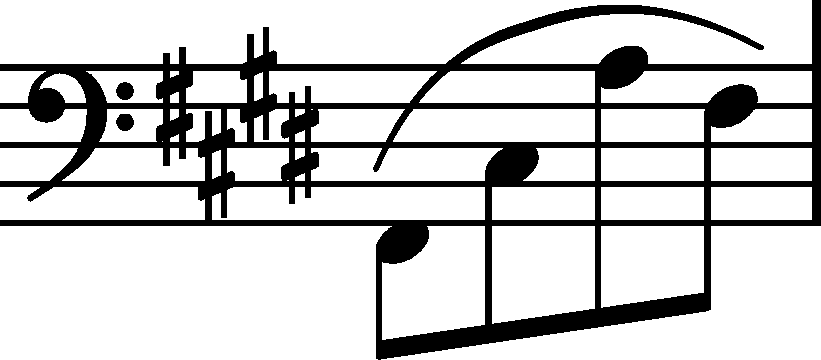



Issues : Deletions in A
|
b. 15
|
composition: WN 37, Lento con gran espressione
..
In A1 one can see a correction of the last semiquaver in the 1st half of the bar, which was initially written as c category imprint: Corrections & alterations; Source & stylistic information issues: Corrections in A , Deletions in A , Enharmonic corrections |
||||||||||||||||
|
b. 16
|
composition: WN 37, Lento con gran espressione
..
In A1 one can see a correction of the 2nd accompaniment figure in this bar. Initially, Chopin simply moved the hand an octave lower: category imprint: Corrections & alterations; Source & stylistic information issues: Deletions in A , Corrections of AI |
||||||||||||||||
|
b. 44
|
composition: WN 37, Lento con gran espressione
..
The rhythmic notation of A1 gives rise to doubts in this bar, since in spite of the change of time signature to The rhythm of the sources coming from [A2] is generally unambiguous; although it is only in CB that the notation can be considered correct, minor inaccuracies in the remaining sources do not hamper its interpretation. In the main text we give the text of CJ, completed with a rest for the R.H. part, without which the notation could be misleading. category imprint: Interpretations within context; Differences between sources; Corrections & alterations; Source & stylistic information issues: Corrections in A , Chopin's hesitations , Errors resulting from corrections , Deletions in A , Main-line changes |
||||||||||||||||
|
b. 56
|
composition: WN 37, Lento con gran espressione
..
In #A one can see that Chopin initially provided the trilled note with the value of a double dotted minim, whereas the c category imprint: Differences between sources; Corrections & alterations; Source & stylistic information issues: Deletions in A , Corrections of AI |

 3. Chopin then crossed out the
3. Chopin then crossed out the  and enlarged the notehead so that it reaches the line above and looks like d3. The original version is preserved in
and enlarged the notehead so that it reaches the line above and looks like d3. The original version is preserved in  .
.




 , the bar contains 5 crotchets. Initially, Chopin most probably envisioned triplet movement, like in the version of [A2] (→
, the bar contains 5 crotchets. Initially, Chopin most probably envisioned triplet movement, like in the version of [A2] (→ 2 note ending the trill – with the one of a quaver. It was still in
2 note ending the trill – with the one of a quaver. It was still in